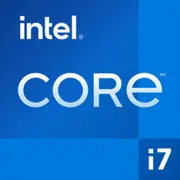Intel Core i7-980

Intel Core i7-980 (Gulftown): Architectural Retrospective and Relevance in 2025
Updated: April 2025
Introduction: Why Is Gulftown Still Being Discussed?
The Intel Core i7-980 processor, released in 2010, has become a legend among enthusiasts thanks to its six-core architecture and Hyper-Threading support. Despite its age, this chip is still found in nostalgic builds and specific tasks. In 2025, it garners interest as an artifact from the peak era of high-performance desktops. Let's explore whether it is worth considering today.
1. Key Features: Architecture and Performance
Gulftown Architecture
The processor is built on the Westmere microarchitecture (an evolution of Nehalem), using a 32nm manufacturing process. It was the first six-core CPU for the mass market with 12 threads thanks to Hyper-Threading. Key specifications include:
- 6 cores / 12 threads;
- Base clock: 3.33 GHz, Turbo Boost up to 3.6 GHz;
- 12 MB L3 cache (shared across all cores);
- TDP 130 W;
- Unlocked multiplier for overclocking.
Performance in 2025
According to Geekbench 6 (2025):
- Single-core score: 509;
- Multi-core score: 1615.
For comparison, a modern budget processor, the Intel Core i3-14100 (2024), scores around ~2200 in single-core and ~8000 in multi-core tests. Gulftown even lags behind mobile chips, but its strength lies in compatibility with legacy software and low prices in the second-hand market.
Key features for its time:
- Support for triple-channel DDR3 memory;
- Intel Turbo Boost and Hyper-Threading technologies;
- Integration into the LGA 1366 platform, aimed at enthusiasts.
2. Compatible Motherboards: The Hunt for Rarities
Socket and Chipsets
The processor uses the LGA 1366 socket. Compatible chipsets include:
- Intel X58 — a flagship platform with support for SLI/CrossFire, SATA II, and USB 2.0.
Selection Considerations in 2025
New motherboards for LGA 1366 have not been produced since 2012. They can only be found in the second-hand market (price: $80–150 for used ones). Popular models include:
- ASUS Rampage III Extreme;
- Gigabyte GA-X58A-UD7;
- MSI X58 Pro-E.
Tips:
- Check the condition of VRM modules — they often overheat;
- Look for boards with updated BIOS for compatibility with NVMe SSDs via PCIe adapters.
3. Supported Memory: DDR3 and Its Limitations
The Core i7-980 works only with DDR3 (officially up to 1066 MHz, but many boards support overclocking to 1600–2133 MHz).
- Triple-channel mode theoretically increases bandwidth, but in practice, the performance gain in gaming is minimal (5-10%).
- Maximum capacity: 24 GB (6 slots × 4 GB).
Issues in 2025:
- No support for DDR4/DDR5;
- High latencies (CL9–CL11) compared to modern standards (DDR5: CL32–CL40, but at frequencies of 6000+ MHz).
4. Power Supply Recommendations
With a TDP of 130 W and the demands of the X58 chipset, the minimum power supply wattage required is 500 W (for a system with a graphics card like the NVIDIA GTX 1660).
Example Configuration:
- Processor: 130 W;
- Graphics Card: 120 W;
- Peripherals: 50 W.
Total: 300 W, but with a buffer for peak loads and overclocking.
Recommended PSUs:
- Corsair CX550 (80+ Bronze, $65) — balancing price and reliability;
- be quiet! Pure Power 12 M 600W (80+ Gold, $100) — for quiet operation.
Important: Older boards may not support modern cable standards (e.g., absence of 8-pin EPS). Use adapters.
5. Pros and Cons of the Core i7-980 in 2025
Pros:
- Affordability: On the second-hand market, the CPU costs $40–70;
- Overclocking: Can reach 4.2–4.5 GHz with good cooling;
- Compatibility with Windows 7/8 — perfect for legacy systems.
Cons:
- Energy efficiency: 130 W compared to 65 W for modern counterparts;
- No support for PCIe 4.0/5.0, USB 3.2, NVMe (without adapters);
- Security vulnerabilities: No patches for Meltdown/Spectre.
6. Use Cases: Where Gulftown Still Holds Relevance
- Retro gaming: Running games from 2005-2013 (e.g., Crysis 3, Skyrim) at medium settings with a GTX 1060-level GPU.
- Office tasks: Working with documents, browsing;
- Server tasks: Can be used as a NAS or home server running Linux;
- Experimentation: Learning about overclocking without risking expensive hardware.
7. Comparison with Competitors
Historical Competitors (2010–2012):
- AMD Phenom II X6 1100T: 6 cores / 6 threads, TDP 125 W. Lagged in IPC but was cheaper.
Modern Comparisons (2025):
- Intel Core i3-14100 (4 cores / 8 threads, $120): 300% faster in single-core tasks;
- AMD Ryzen 5 7500F (6 cores / 12 threads, $180): Four times higher multi-threaded performance.
Conclusion: Gulftown is not competitive today, except in the ultra-budget segment.
8. Practical Assembly Tips
- Cooling: Use tower coolers (e.g., DeepCool AK400, $30) — older AIO coolers may leak.
- Graphics Card: Do not use a GPU more powerful than an RTX 3050 — it will create a bottleneck.
- Storage: Connect SSDs via SATA III or a PCIe adapter.
- OS: Use Windows 10 LTSC or Linux for better driver support.
9. Final Conclusion: Who Should Consider the Core i7-980?
This processor is worth considering only in three scenarios:
1. Budget builds for basic tasks (total system cost up to $200);
2. Retro enthusiasts building PCs from the 2010s era;
3. Experimenters learning about overclocking.
In 2025, the Core i7-980 is more of a historical artifact than a practical solution. However, its price and availability make it an interesting option for niche projects. If performance is needed, consider modern Intel Core 14th generation or AMD Ryzen 7000 chips.
Basic
CPU Specifications
Memory Specifications
GPU Specifications
Benchmarks
Compared to Other CPU
Share in social media
Or Link To Us
<a href="https://cputronic.com/index.php/cpu/intel-core-i7-980" target="_blank">Intel Core i7-980</a>